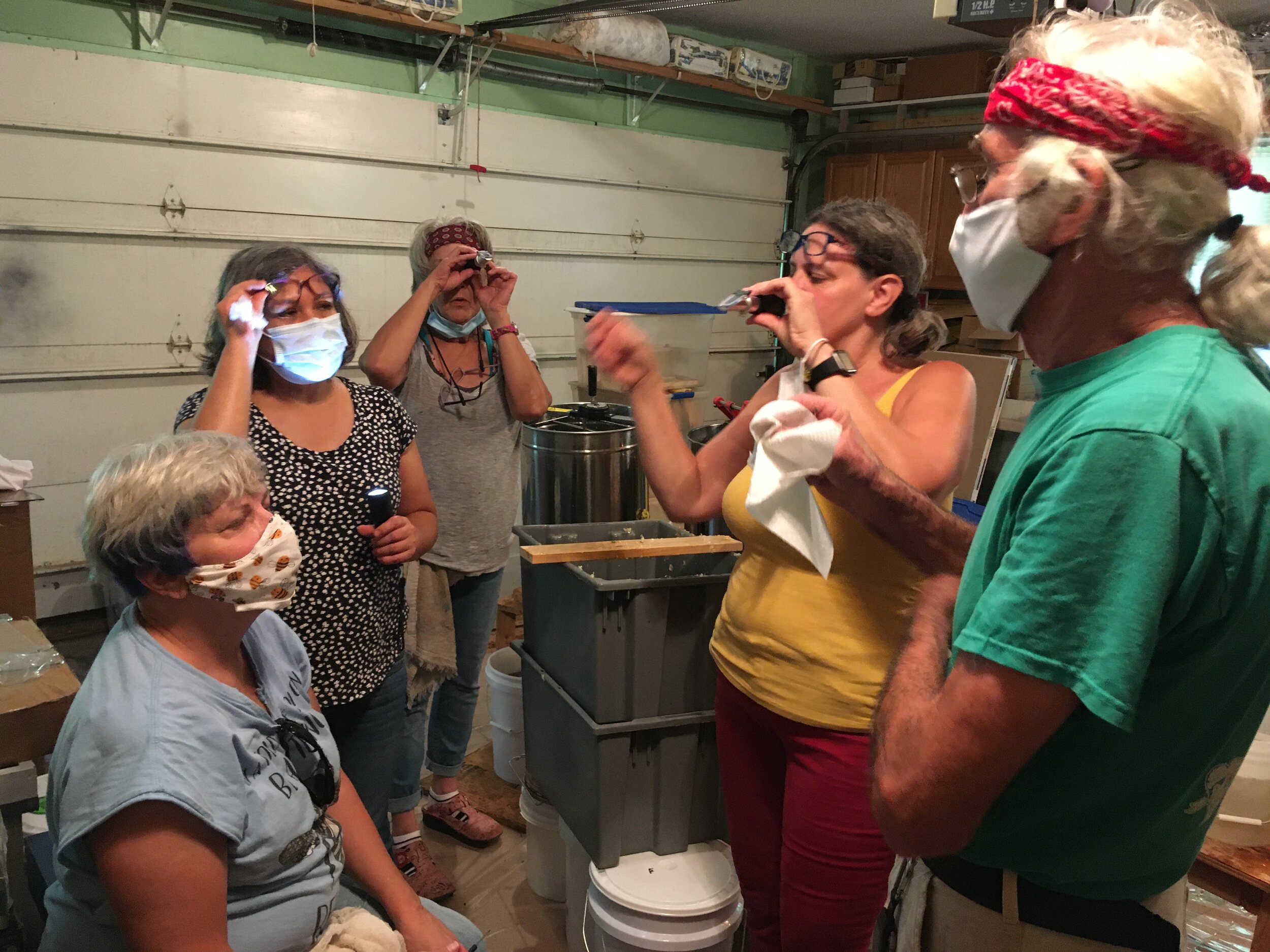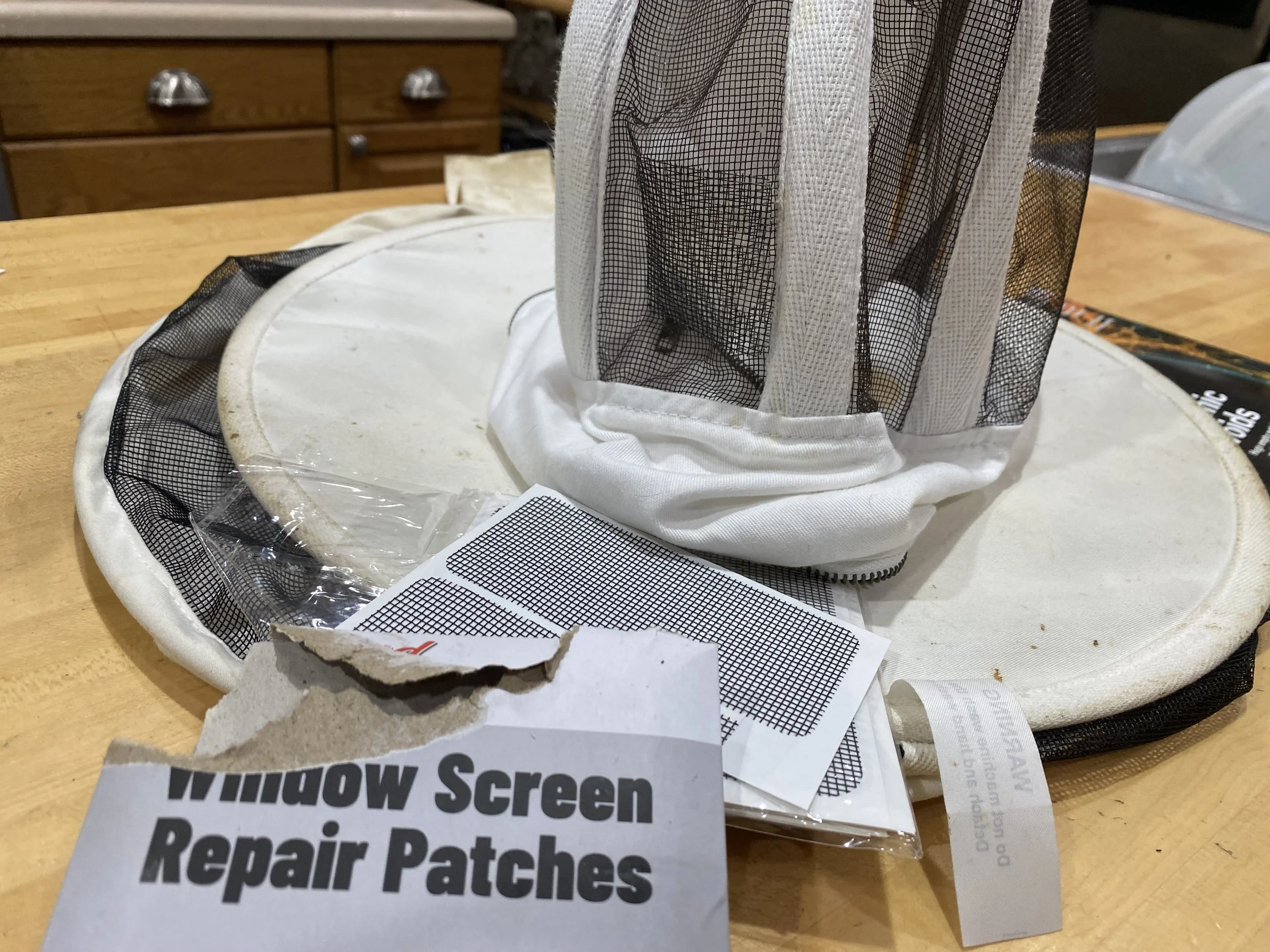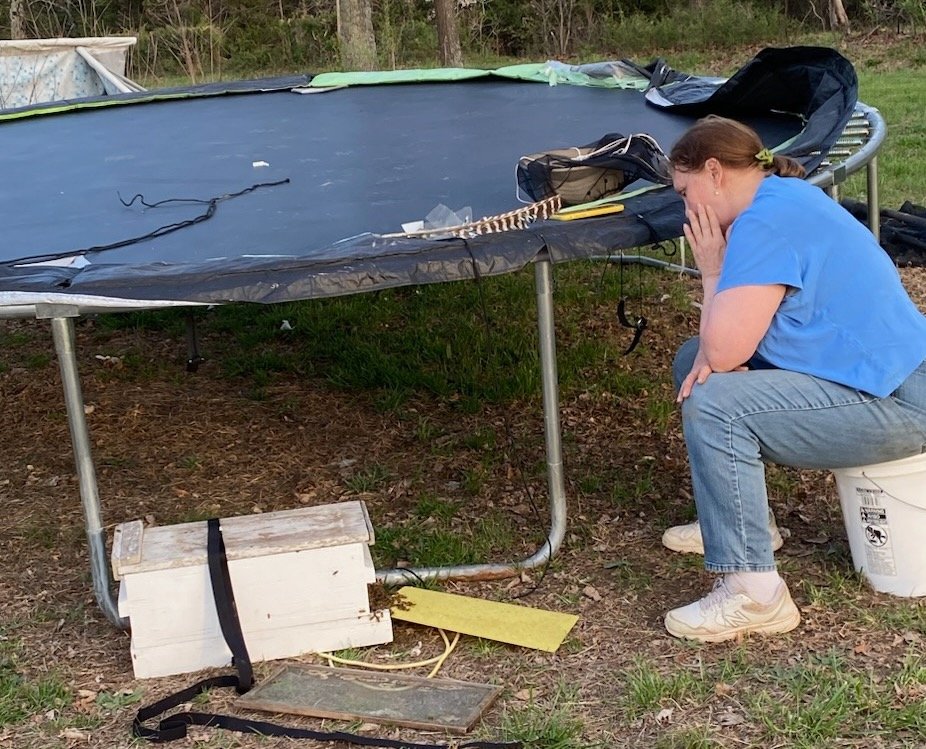Testing Honey
/Beginning beekeepers learn how to read a refractometer. (Photo by Charlotte Ekker Wiggins)
Testing Honey
To determine the honey moisture level of extracted honey, beekeepers use a refractometer, a gadget that at first was a bit of a mystery to me. Turns out the used refractometer I have is a more complicated tool to use, especially since I purchased it without instructions.
One of my beekeeping students now turned mentor took mine to check it. He said later he purchased an easier one to use and used it for a demonstration August 7, 2020 at a hands-on honey extraction in my garage.
Beekeepers wait until honeybees cap the collected nectar dehydrated in wax frames before they are sealed. Bees use their wings to get the flower nectar dehydrated. The honey you see in a jar is basically dehydrated flower nectar. it takes 2 million flowers to make one pound of honey.
Beekeepers want honey at 20% moisture or less. Nectar is 80 to 95% water and 5 to 15% sucrose (or sugar). The sucrose is broken down into two simple sugars as the bees carry the nectar from the flower to the hive. Once the nectar is in the open wax cells, worker bees fan their wings to create heat that will evaporate the water that is mixed with nectar.
When enough water is evaporated, the result is honey. The worker bees then cap the honey with beeswax to preserve the low moisture level. In general, capped honey has a moisture content of about 18%.
The key to an accurate reading is first calibrating the tool. Usually olive oil can be used to get the reading to the recommended setting.
Using a toothpick, he covered the blue plate surface with olive oil. The reading was then adjusted to 71.5 on one of the several scales visible through the eyepiece.
The blue refractometer section is where to place the liquid and honey. (Photo by Charlotte Ekker Wiggins)
Once calibrated, honey is placed on the cleaned off blue plate. Using a good source of light, or going outside, then the percentage of moisture shows up as a fuzzy blue line on the right side.
My honey for this year registered at 18.5% moisture, towards the top of the desirable moisture scale which ranges from 16-18.5%. Below 16 honey crystalizes. Over 19% honey can ferment.
Learning to read the refractometer is key. (Photo by Charlotte Ekker Wiggins)
As I learned, there are several different kinds of refractometers on the market. When getting one, make sure to get, or be able to find, the instructions!














